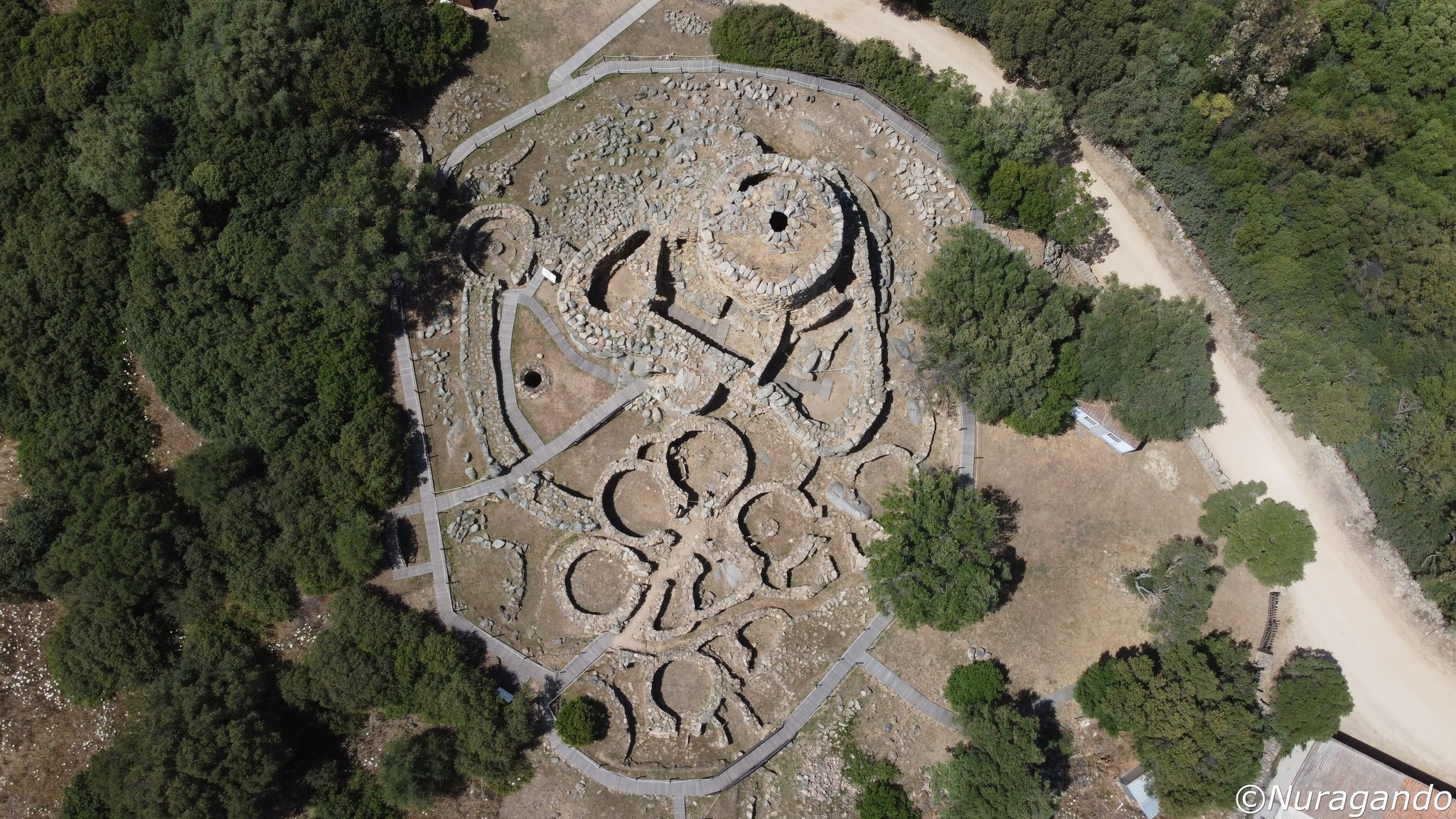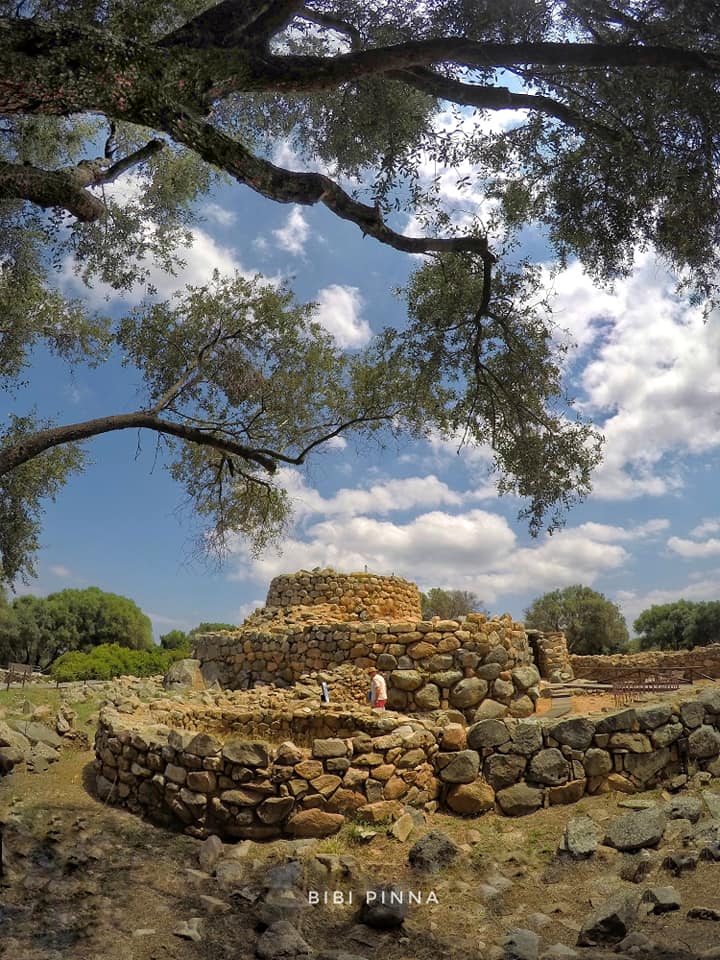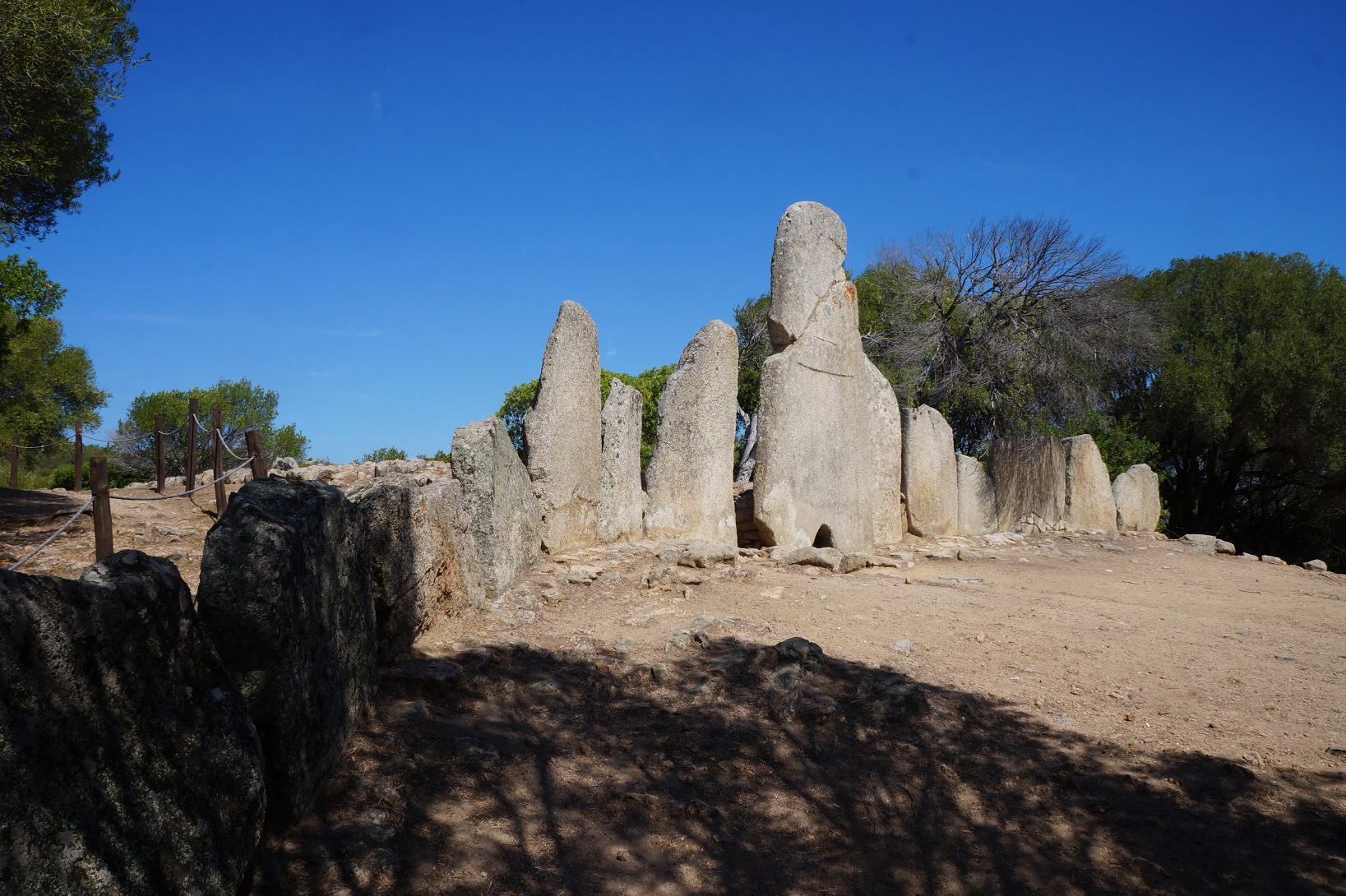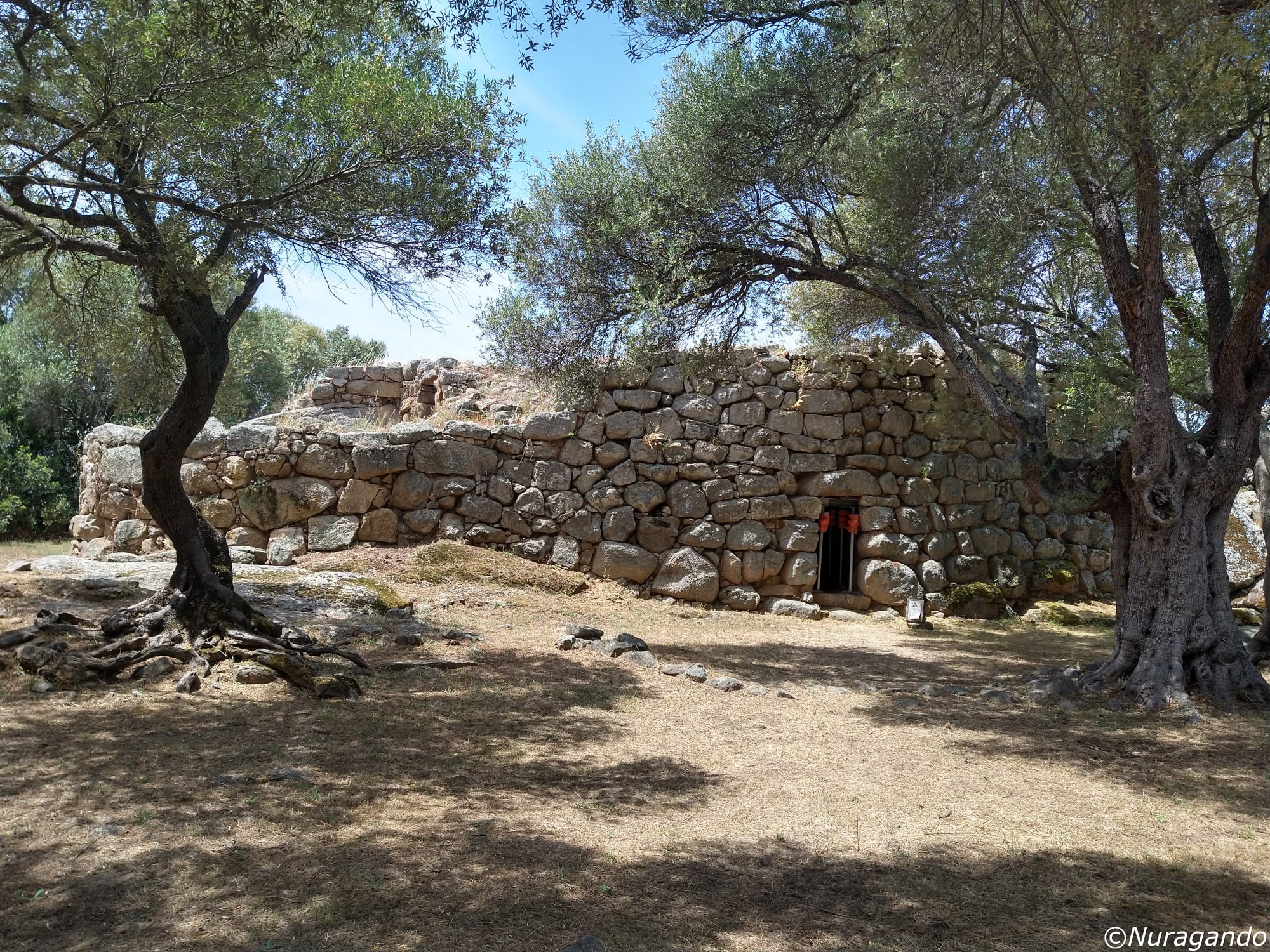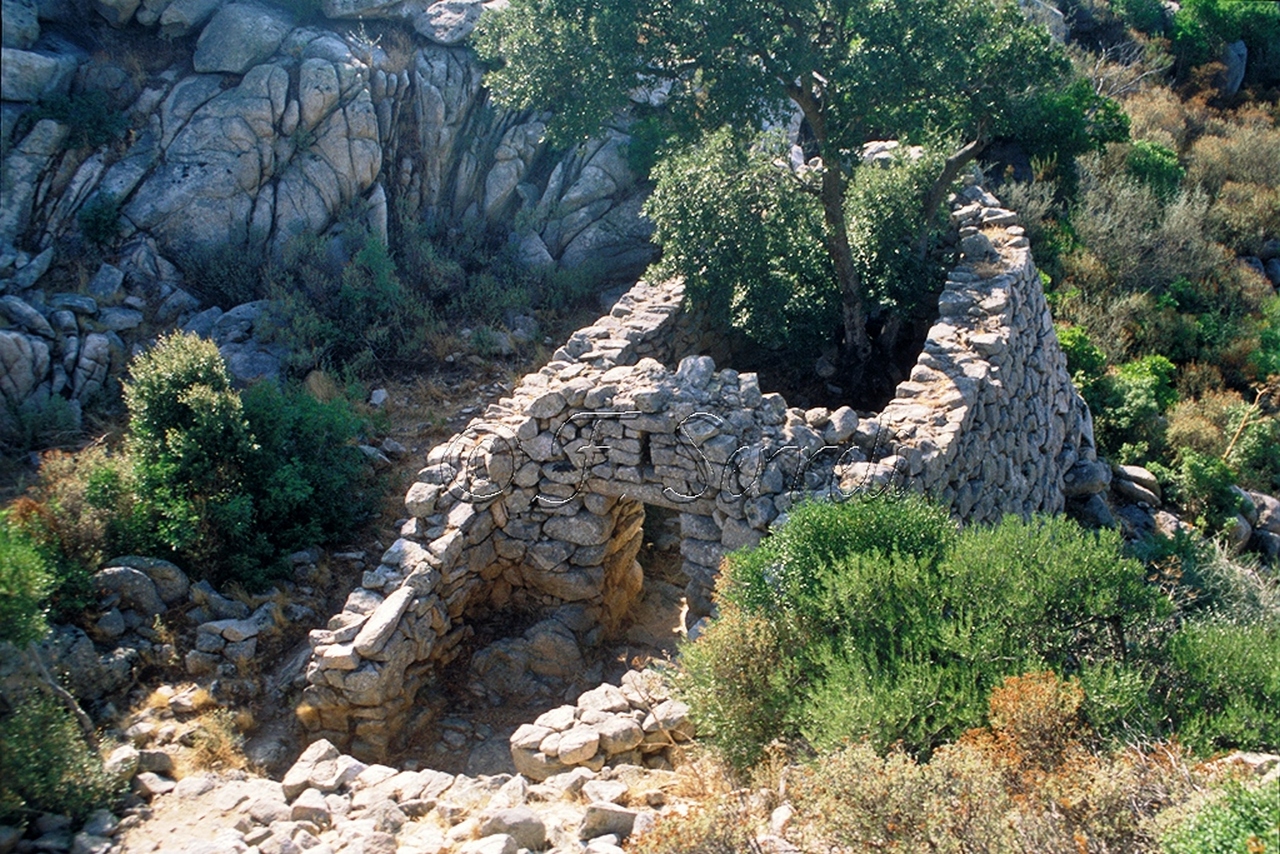“Capichera” is a place name known particularly for the production of an excellent Vermentino. However, this geographical area of the municipality of Arzachena deserves great consideration especially for the presence of a complex nuraghe named “La Prisgiona.” The nuraghe has been masterfully excavated and investigated by the archaeologist Angela Antona, who particularly notes how it stands as a dominant and controlling presence over a territory of various square kilometers, presenting dimensions, structural complexity, and architectural expedients that reveal its prominent role within the relevant territorial system.
In an article published in the May 2009 edition of the magazine Bell’Italia, Aldo Brigaglia describes the settlement: “There are giants that remain silent for millennia and then, one fine day, awakened by who knows what spell, decide to speak and reveal the secrets they have kept hidden for so long. This is the case of the nuraghe La Prisgiona in Arzachena: a stone giant that, just a few months ago, thanks to the excavations initiated by the Superintendency of Sassari and conducted with painstaking patience and scientific rigor by archaeologist Angela Antona, is unveiling many of the mysteries that have so far surrounded the singular story of the nuragic civilization. Experts and scholars have always been eager to unravel the mysteries of a civilization that lasted nearly 1,500 years (from 2000 to 500 BC) without leaving any written form for posterity to know and interpret, but only the grandiose stone constructions, the evocative funerary monuments, and the thousands of bronze statuettes depicting characters and situations. The excavations at La Prisgiona are providing extraordinary contributions to knowledge, offering new information about the reasons for the settlement, the magnificence of the architecture, the complex society that evolved there, and the forms of economy that sustained it.
At its peak, between 1200 and 1000 BC, the nuragic civilization populated the entire island territory, erecting its constructions in ever more majestic and complex forms, until they assumed the appearance of true fortresses. The nuraghe is no longer just a punctual settlement but a tool for organizing and controlling the territory. Mastery of metallurgical techniques, the richness and variety of production, and dynamic trade testify to the prosperity of the island, which is not closed in on itself but engages with other Mediterranean civilizations, especially the Mycenaean, from which it receives determining contributions and stimuli. Gallura had long been considered estranged from these developments. Current excavations, however, are confirming that this area was fully involved in the cultural events of the rest of the island.
Nearby La Prisgiona, several nuragic monuments of great importance and exceptional beauty were already known: the nuraghe Albucciu, the tombs of the giants of Coddu ‘Ecchiu and Li Lolghi, the necropolis of Li Muri, and the temple of Malchittu. An extensive village composed of about a hundred circular huts has now emerged around the nuraghe (though the part of the settlement located northwest of the nuraghe remains to be explored). The nuraghe is at the center, set on a granite spur: it consists of the mastio and a bastion with two towers, and has an inner courtyard with a well eight meters deep, still active today. The constructions serve different purposes beyond simple habitation, indicating the carrying out of activities on which the village’s economy was based. The remains of grains and milling stones speak of the cultivation and storage of cereals produced in the surrounding plain. The rooms designated for artisanal activities, such as ceramics, indicate the realization of new organizational models for work and production.
Among the most interesting objects found inside the nuraghe and the huts is certainly a series of askoid jugs: recent gas chromatographic analyses performed on samples of this type have confirmed that they contained wine, supporting the hypothesis – put forth by several scholars – that vine cultivation was an ancient knowledge in Sardinia, well before the arrival of the Phoenicians (to whom traditional literature attributes the introduction of the plant to the island). Common use ceramics (stoves, fire-dogs, pots, trays, jars, bowls, and cups) and objects for wool spinning reconstruct scenes of daily life. Bones of cattle, pigs, and especially sheep and goats confirm livestock activities, which must have constituted the main basis of the economy. Remains of birds and wild boar, shell valves, and fish bones reveal what the inhabitants ate: from agricultural and pastoral products to those obtained from hunting, fishing, and gathering along the shores of the sea.”
The photos of the nuragic complex La Prisgiona are by Andrea Mura-Nuragando Sardegna, Marco Cocco, and Bibi Pinna. The tomb of giants of Coddu Ecchju is captured by Lucia Corda and that of Li Lolghi by Marco Cocco. In the shots respectively by Andrea Mura-Nuragando Sardegna, Franco Serreli, and Marco Cocco: the nuraghe Albucciu, the nuragic temple of Malchittu, and the necropolis of Li Muri. All the monuments mentioned are located in the territory of Arzachena.